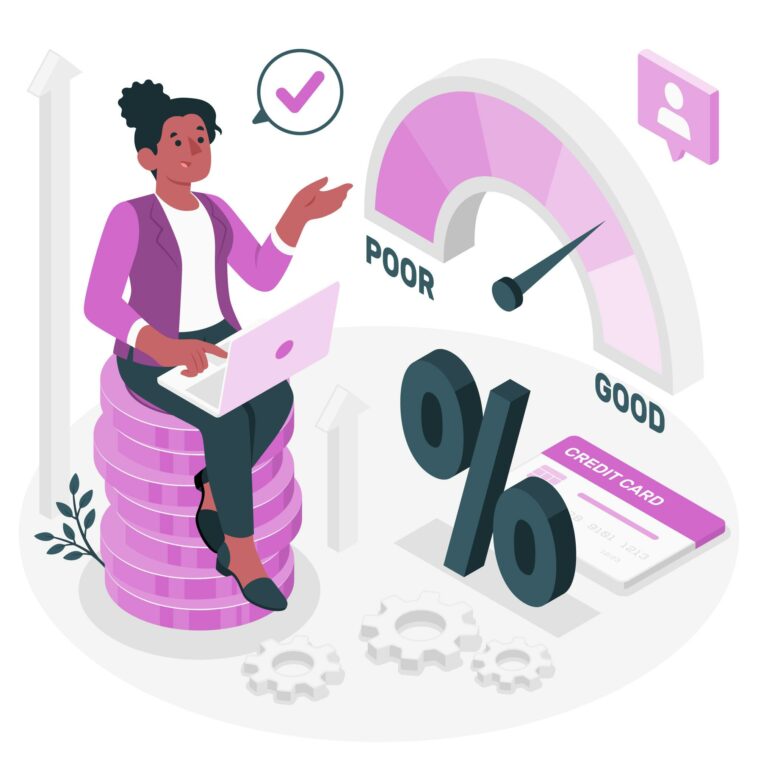Let’s face it—loans are a huge part of our financial lives. Whether you’re buying a home, financing a car, or simply need some extra cash to cover expenses, loans can help you achieve your goals. But here’s the kicker: the loan rate you get can make a massive difference in how much you end up paying over the life of your loan. It’s no exaggeration to say that getting a better loan rate could save you thousands of dollars!
In this post, I’ll guide you through everything you need to know about loan rates—what they are, how they work, and how to secure the best rate possible. By the end, you’ll feel empowered to make smarter borrowing decisions and save money in the process. Let’s dive in!
What Are Loan Rates?
Loan rates, also known as interest rates, are the costs you pay to borrow money. When you take out a loan, the lender charges you interest as a fee for lending you the funds. This interest is expressed as a percentage of the loan amount and is paid in addition to the principal—the actual amount you borrowed.
For example, if you take out a loan for $10,000 at a 5% interest rate, you’ll be paying 5% of that loan amount in interest, on top of the $10,000 principal. The loan rate can have a significant impact on how much you’ll pay back over time, which is why it’s essential to understand how they work and how to secure the best rate possible.
Fixed vs. Variable Loan Rates: What’s the Difference?
Loan rates generally come in two flavors: fixed and variable. The type of rate you choose can have a big impact on your loan payments, so it’s crucial to understand the differences.
Fixed Loan Rates
With a fixed-rate loan, the interest rate stays the same for the entire term of the loan. This means your monthly payments will remain consistent, making it easier to budget. Fixed loan rates are typically a better option if you prefer stability and want to avoid surprises down the road.
For example, if you get a 30-year fixed-rate mortgage at 4%, your rate will stay at 4% for the entire 30 years, even if interest rates in the broader market go up. This predictability is why many borrowers opt for fixed-rate loans, especially for long-term financing like mortgages.
Variable Loan Rates
Variable loan rates, on the other hand, fluctuate over time. These rates are often tied to a benchmark interest rate, such as the prime rate or LIBOR (London Interbank Offered Rate). When the benchmark rate goes up or down, your loan rate will follow suit, meaning your monthly payments could increase or decrease during the loan term.
Variable rates can offer lower initial rates compared to fixed rates, but they come with more uncertainty. If interest rates rise, you could end up paying more over time. However, if rates drop, you could benefit from lower payments. Variable rates are often seen in personal loans, adjustable-rate mortgages (ARMs), and some business loans.
Factors That Affect Loan Rates
Loan rates aren’t one-size-fits-all. Several factors come into play when lenders determine the rate you’ll get. Here are the key factors that can affect your loan rate:
- Credit Score: Your credit score is one of the biggest factors lenders consider when setting your loan rate. A higher score typically means a lower rate, as lenders see you as a less risky borrower. If your credit score is below average, you may be offered higher rates to compensate for the perceived risk.
- Loan Amount: The size of the loan also impacts the rate. Larger loans might come with slightly lower rates because they spread the lender’s risk over a longer term or larger amount. Smaller loans may have higher rates, especially if they are unsecured (i.e., not backed by collateral).
- Loan Term: The length of time you have to repay the loan, known as the loan term, also affects the interest rate. Generally, shorter loan terms come with lower interest rates, while longer terms tend to have higher rates.
- Type of Loan: Different types of loans come with different rates. For example, mortgage rates tend to be lower than personal loan rates because they’re secured by your home. Similarly, auto loans typically have lower rates because the car serves as collateral.
- Economic Conditions: Broader economic conditions, like inflation and the Federal Reserve’s interest rate policies, also play a role in determining loan rates. In a low-interest-rate environment, you’ll generally find better loan rates across the board, while high inflation or rising federal rates can push loan rates higher.
Types of Loans and Their Typical Rates
Different loans have different typical rates, depending on the risk and security associated with them. Let’s break down some of the most common types of loans and their typical interest rates:
Mortgage Rates
Mortgage rates are generally lower than other types of loans because the loan is secured by your home. Typical mortgage rates for a 30-year fixed-rate loan range from 2.5% to 4%, while 15-year mortgage rates are often slightly lower. Adjustable-rate mortgages (ARMs) might start lower but can increase over time.
Auto Loan Rates
Auto loans are another secured type of loan, with your car serving as collateral. Interest rates for auto loans typically range from 3% to 6% for borrowers with good credit. However, if you have bad credit, you might see rates as high as 10% or more.
Personal Loan Rates
Personal loans are usually unsecured, meaning they don’t require collateral. As a result, they tend to have higher interest rates, typically ranging from 5% to 36%, depending on your credit score, income, and the loan amount.
Student Loan Rates
Student loan rates vary depending on whether they’re federal or private. Federal student loans generally have fixed rates set by the government, typically ranging from 4% to 7%. Private student loans, on the other hand, can have variable rates that range from 3% to 12% depending on the lender and your financial profile.
How to Get the Best Loan Rate
If you’re shopping for a loan, you probably want the best rate possible to save money. Here are some steps you can take to improve your chances of getting a favorable loan rate:
1. Improve Your Credit Score
Your credit score is one of the biggest factors that determines your loan rate. Before applying for a loan, check your credit report for any errors and take steps to improve your score. This might involve paying down credit card balances, making all payments on time, and avoiding new debt.
2. Shop Around for Lenders
Different lenders offer different rates, so don’t settle for the first offer you get. Shop around, compare loan rates from various financial institutions, and consider both traditional banks and online lenders. You might be surprised at the range of rates you’ll find!
3. Consider a Shorter Loan Term
As mentioned earlier, shorter loan terms often come with lower interest rates. If you can afford the higher monthly payments that come with a shorter term, you could save a lot on interest over the life of the loan.
4. Use Collateral
If you’re looking for a lower rate, consider opting for a secured loan. Secured loans, like mortgages and auto loans, typically offer lower rates because the lender has collateral to fall back on if you default. If you don’t have a house or car to use as collateral, you can also explore secured personal loans that allow you to put up other assets.
5. Apply with a Co-Signer
If your credit score isn’t where you’d like it to be, consider applying for a loan with a co-signer. A co-signer with strong credit can help you qualify for a better loan rate since the lender will take into account their creditworthiness when assessing the risk.
How Loan Rates Affect Your Monthly Payments
It’s important to understand how loan rates impact your monthly payments. A higher interest rate means higher monthly payments, while a lower rate will reduce your payments. Here’s an example:
Let’s say you take out a $20,000 personal loan with a 5% interest rate and a 5-year term. Your monthly payment would be about $377. If your rate were 10%, however, your payment would jump to $425. That’s a difference of nearly $50 a month—adding up to $3,000 over the life of the loan.
Conclusion
Loan rates are a critical factor in determining how much a loan will cost you. By understanding how they work, what factors affect them, and how to secure the best rate, you can save yourself a lot of money in the long run. Whether you’re shopping for a mortgage, personal loan, or auto loan, take the time to do your research, improve your credit, and compare lenders. With a little effort, you’ll be well on your way to securing a loan that fits your budget and financial goals.
FAQs About Loan Rates
What is a good loan rate?
A good loan rate depends on the type of loan and your creditworthiness. For example, a mortgage rate below 4% is considered good, while a personal loan rate under 10% is generally favorable. Always compare offers to find the best deal for your situation.
How can I lower my loan rate?
You can lower your loan rate by improving your credit score, opting for a shorter loan term, using collateral to secure the loan, or applying with a co-signer. Shopping around for the best offer from different lenders also helps.
What’s the difference between APR and interest rate?
The interest rate is the cost of borrowing the principal amount, while the APR (Annual Percentage Rate) includes the interest rate plus any additional fees or costs associated with the loan. The APR gives a more comprehensive view of the total cost of the loan.
How does my credit score affect my loan rate?
Your credit score plays a major role in determining your loan rate. A higher score indicates to lenders that you’re a responsible borrower, which makes you less risky to lend to, resulting in a lower interest rate. Conversely, a low credit score could lead to higher rates.
Now that you have a clear understanding of loan rates, you’re ready to make more informed decisions and secure the best loan for your needs. Happy borrowing!



